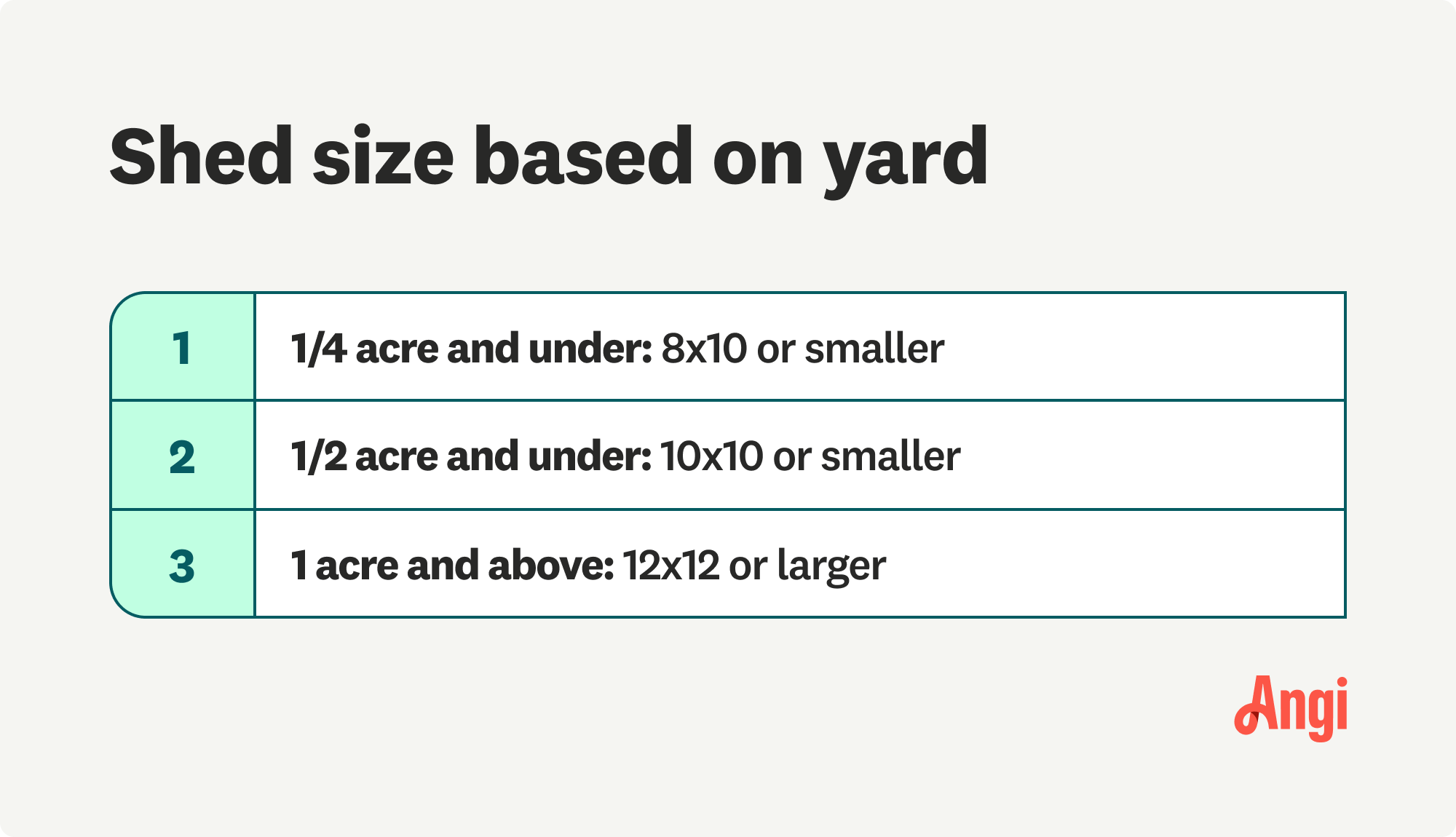Stylish Storage: How to Find the Right Size Shed for Your Backyard
When it comes to sheds, size definitely matters


Estimate the volume of what you’ll store and add 20%–30%.
Account for flat land that’s clear of trees for a proper foundation.
Scale your shed appropriately to your house and yard space.
Don’t forget about permits or setback restrictions.
Looking for some extra space? Storage sheds are a great option for housing your extra stuff or creating additional living space. But standard shed sizes can vary widely, and determining what you need isn’t always easy.
Too big, and you take up unnecessary space in your yard. Too small, and you can’t accommodate your things. Luckily, there are some simple guidelines for finding the perfect fit.
What to Consider Before Buying a Shed
Start with a detailed list of what you hope to store. Estimate sizes or measure things out, then add 20% to 30% to that size for your shed. You’ll want at least 2 to 3 feet around the items you’re storing for clearance.
Next, consider the size of your yard and how much level land you have to build on. Your shed will need to sit on a flat spot, clear of trees. You’ll also want about an extra foot of space around your shed for a foundation area.
Last, account for property lines, floodplains or other setbacks, and make sure your shed can fit within any restrictions. Larger sheds may also need a permit, so be sure to check your local guidelines and take that into consideration.
Choosing a Shed Size Based on Your Yard’s Dimensions
It’s a good rule of thumb to scale your shed to the general size of your house and yard. The below guidelines are a great place to start, but at the end of the day, it’s your space.
If you’ll be using your shed as a workshop or extra living space, you may be more comfortable with a storage shed size that’s a bit larger than normal.

| Shed Size Based on Yard | Acreage | Approximate Shed Size |
|---|---|---|
| Small yard | 1/4 acre and under | 8-by-10 or smaller |
| Medium yard | 1/2 acre and under | 10-by-12 or smaller |
| Large yard | 1 acre and above | 12-by-12 or larger |
What Types of Items Can I Store in a Shed Based on Its Size?

The space you need for a shed ultimately depends on how you plan to use it, but you can get an idea of size based on average capacity. Here’s what you can fit in most typical shed sizes.
Small Sheds
Small sheds are great for outdoor equipment that won’t fit in your house, They’re also easy to nest alongside your home or in small yard spaces.
Standard small shed sizes usually include 6-by-8, 8-by-12, or 10-by-8, and house things such as:
Bikes
Hobby supplies
Gardening supplies
Tools
Pool chemicals
Backyard cleaning supplies
Medium Sheds
Medium sheds include sizes ranging from 10-by-10 and 10-by-16 to 12-by-10. They allow for more storage and a bit of work space without taking up too much of your yard.
They’re great for items such as:
Larger yard equipment
Gardening supplies
Bikes
Hobby tools
Workbench
Large Sheds
Large sheds usually fall in the size range of 12-by-12 to 12-by-24.
They provide plenty of room to move around and are great for items such as:
Kayaks
Recreational vehicles
Large machinery or tools
Hobby equipment
Office space
Workbenches and cabinets
Extra-Large Sheds
Extra-large sheds offer additional living space and room for just about anything you’d like to store. Shed sizes in this category range from 16-by-10 to 16-by-24. They’re ideal for extra vehicles, and can allow plenty of space for home gym equipment or hobby space.
They’re also great for the following:
Boat storage
Bunk houses
Guest houses
Pool houses
Multiple office spaces
Kids’ play area
Entertainment or rec rooms
How Do You Choose the Right Shed for You?
Once you’ve determined the general size you need for your storage shed, it’s time to think through your budget and design. There are plenty of storage shed ideas that will inspire you, from vibrantly painted sheds to custom sheds that can be made to look like a mini home.
Decide if you’ll build yourself or hire a shed builder near you to help, and check out material options in person to see what you like. The sky’s the limit for your extra space!





- Carpentry
- House Framing Companies
- Baseboard Installation
- Subcontractors
- Pole Barn Builders
- Elevator Companies
- Grab Bar Installation
- EV Charger Installer
- Caulking Services
- Walk-In Tub Installers
- Attic Ladder Installation
- Bathroom Fan Installation
- Bathroom Vanity Installation
- Tub to Shower Conversion
- Balcony Contractors









